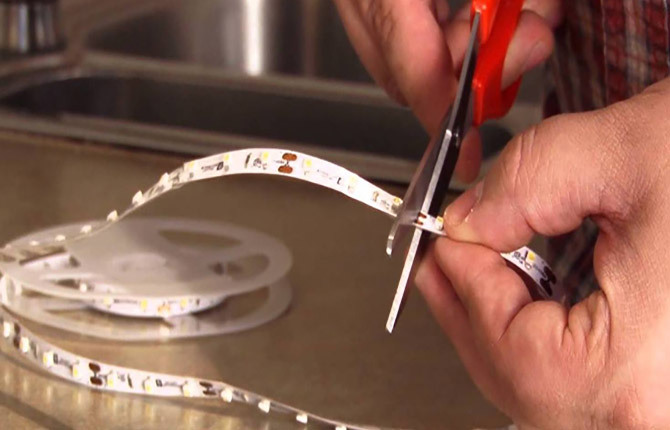Plasma TV placement includes several options, one of which is to mount it on the wall using a bracket. This solution allows not only to save space, but also to modernize the interior somewhat. Despite their functionality, factory brackets have only one drawback - an unreasonably high price.
Agree, there is no point in overpaying for a structure that you can make yourself. Further in the article, step-by-step instructions will be presented to make a bracket with your own hands for a TV of any model.
Depending on the degree of functionality, there are several types of construction, of which only two can be built independently. Next, you can familiarize yourself with the options for making homemade brackets from scrap materials, including step-by-step instructions for each of them.
The content of the article:
- Plasma fixing requirements
- Choosing the right mounting location
-
DIY TV bracket
- Option # 1 - fixed wall bracket
- Option number 2 - swing-out design
- Conclusions and useful video on the topic
Plasma fixing requirements
Most of the manufactured TVs involve the use of a VESA mount.
All factory brackets are made in accordance with the distances between the mounting points located on the back of the unit. These are usually four holes, forming a square or elongated rectangle.
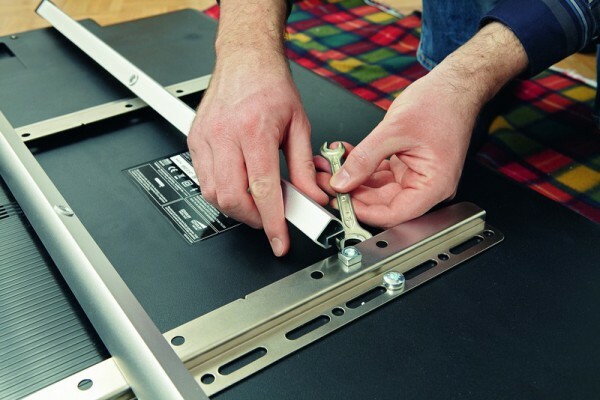
The TV set comes with standard mounting bolts that can be installed in the mounting holes or be in a package with other components
When bracket installation it is recommended to choose steel dowels for main walls. For walls made of foam block or cinder block, it is better to use propylene dowels. The diameter of the self-tapping screws used must be at least 4 mm.
Depending on the type of load-bearing wall, the deepening can be:
- 10 mm for concrete walls;
- 30 mm for brick walls;
- 50 mm for foam block walls.
The presented requirements do not apply to plasterboard walls, since they do not have a good load-bearing capacity. If the sheets fit snugly against the cap wall, then the bracket is mounted directly on the wall.
In the event that the gypsum plasterboard sheets are fixed to the frame, and the sheathing thickness is less than 12 mm, it is not recommended to install the TV on such a wall. The only option is to mount the bracket directly on the frame, but in this case, you need to know exactly its location under the sheet.
Choosing the right mounting location
Before starting the construction of a homemade bracket and its subsequent installation, it is important to decide exactly where the structure will be located.
When buying a TV with a large display, it is recommended to choose a wall with a large free area so that the equipment will harmoniously fit into the interior.
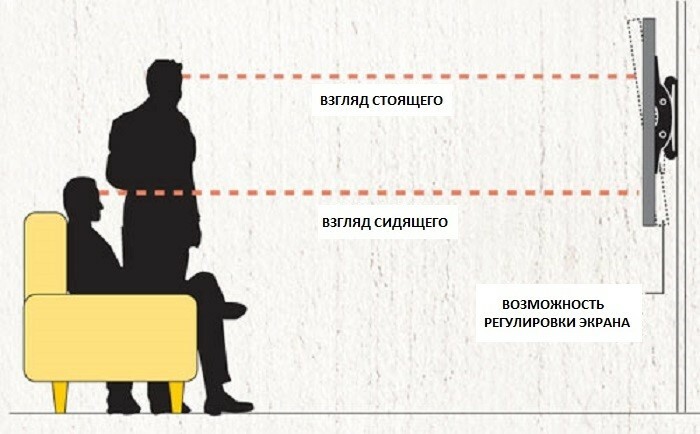
When choosing the optimal height at which the TV will be installed, it is important to ensure that the screen is located at eye level of the person sitting on the furniture.
You should also consider the strength and load-bearing capacity of the wall material. Loose materials include foam concrete and drywall, which are less durable than concrete, brick and wood. Ideally all sockets should be located in close proximity to the TV, thus eliminating the need for extension cords.
The screen must be positioned in such a way that, even with significant rearrangement, it is within the normal visibility zone. In addition, the TV should be installed as far away from cabinets, dressers and other furniture as possible. So, due to the free space, the best cooling of the equipment is ensured.
DIY TV bracket
The well-thought-out bracket design allows you to swivel, tilt and even bring the screen closer to the optimal distance.
When building a homemade product, you only pay for materials, many of which you will find at home. In this case, it is important not to deviate from the instructions and strictly follow all the rules.
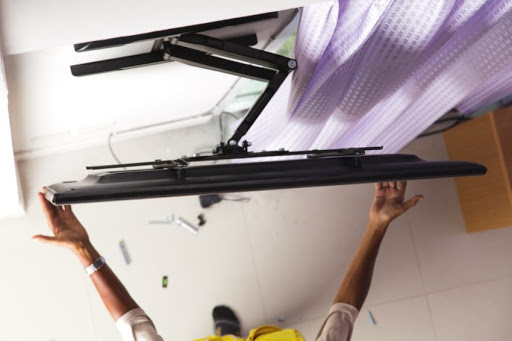
The swivel bracket is ideal for living room or bedroom installations where you may need to rotate the screen, while the fixed structure is best installed in the kitchen
There is a huge selection of brackets on the modern market, thanks to which you can adjust the equipment to your needs.
Among all the possible types, it is worth highlighting only two options that you can build yourself:
- Fixed. This bracket allows you to securely fix the plasma on the wall, without the possibility of turning or tilting it. This is the simplest mounting option that requires a minimum of holes and screws.
- Swing-out. With the help of such a bracket, you can turn the screen in any direction, and bring it closer if necessary. In this case, a more complex design is used, with many connections.
The cost of the latter design is especially high, so by building the swing-out bracket yourself, you can save a large amount of money. By the way, the cost of a factory mount directly depends on the number of inches of purchased plasma.
Option # 1 - fixed wall bracket
One of the simplest types of construction is the fixed bracket. Its mounting system is as simple as possible, however it is not designed to tilt or rotate the screen.
You can build a fixed TV bracket from components that are easy to find in any building materials store.
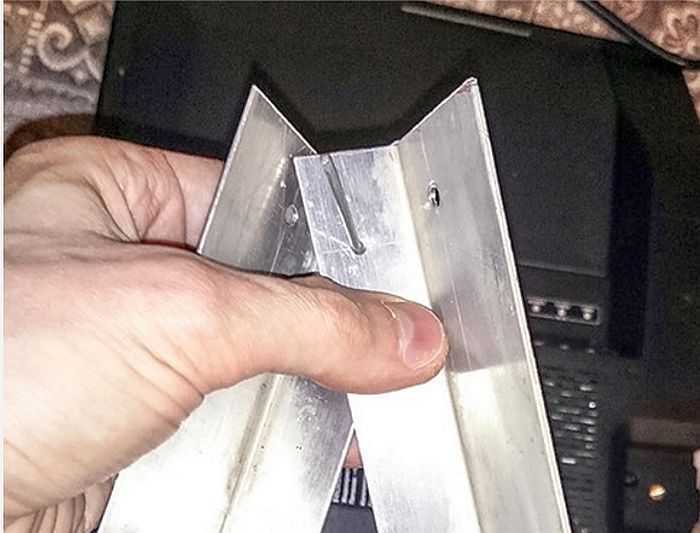
For the best fit, it is recommended to use metal corners, thanks to which you can not be afraid that the TV will fall if you accidentally hook it
In the first version, the fixed mount is made of wood. To do this, you will need: two wooden planks, self-tapping screws with a ring, hooks and plastic dowels. It is better to give preference to hardwood planks, since they are the ones with the highest strength.
Take strips no more than 10-15 centimeters long, that is, their dimensions should not exceed the length of the TV case. The top bar should be slightly thicker than the bottom to allow for a slight tilt of the screen. Next, two screws with a ring must be screwed to the upper edge of each strip.
Using the screws that you need to screw into the special holes, secure the strips to the back of the TV. One bar is on top, the other on the bottom. In this case, you should rely on the mounting holes for the bracket.
Measure the distance between the rings horizontally and vertically, and transfer them to the wall. Further, relying on the marks, it is necessary to drill four holes in the wall, and install dowels with hooks on which the plasma will be hung.
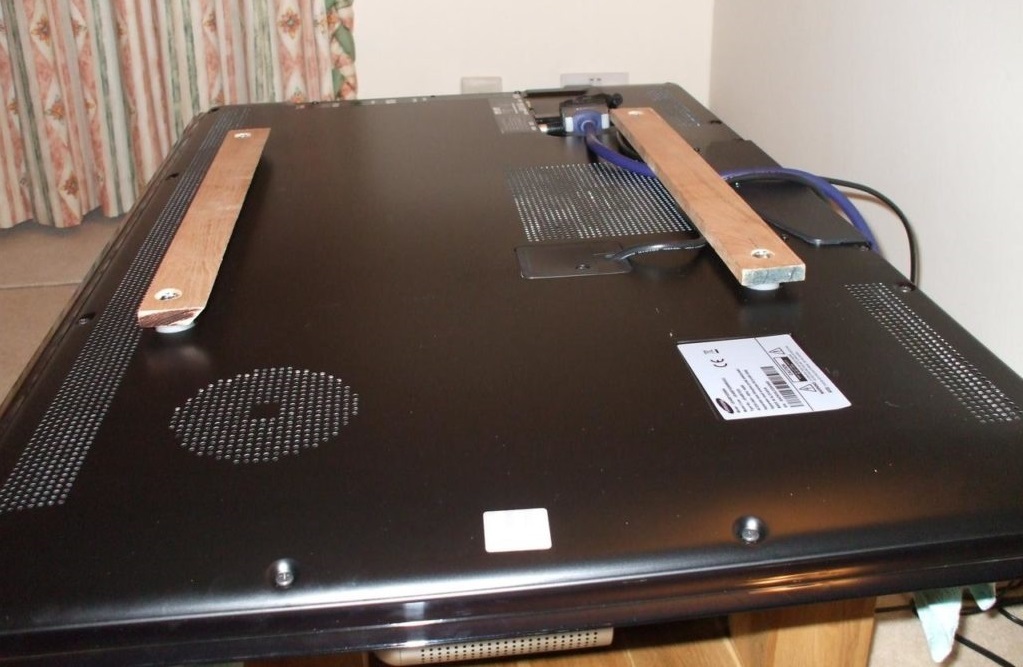
The fixed bracket with wooden slats is highly durable, so even suitable for models over 26 ''
For the manufacture of the second version of a fixed structure, you will need: four aluminum corners, one bicycle spoke, bolts, screws and plastic dowels. If possible, it is better to take aluminum corners, since, unlike steel, aluminum is easier to process.
The place of installation, the size of the dowels and holes are selected in accordance with the dimensions of the screen. Pre-drill two holes at each corner. Take two corners and bolt them to the back cover. The second pair of corners will need to be screwed to the wall.
To do this, attach them to the wall and mark with a pencil the holes for the plastic dowels. To connect the corners together, you will need to drill another hole in the upper side of each corner.
It is important that one corner goes into another, so it is better to make the distance between the wall corners a couple of millimeters less. Next, hold the TV against the wall and line up the drilled holes so that you can thread the bicycle spoke through them.

A 2mm bicycle spoke can easily support the weight of a 26 '' TV, however larger diameters may require a larger spoke
The spoke allows you to keep the vehicle body in a vertical plane, and the corners prevent its accidental horizontal displacement. If it is necessary to remove the device from the wall, it is enough to remove the spoke and the connections will be disconnected.
Option number 2 - swing-out design
By means of such a bracket, you can turn the screen in the desired direction, and bring it closer if necessary. Some designs even allow you to adjust the angle of the screen, which is especially important when the TV is suspended too high.
For the independent construction of a swing-out structure, you will need two metal plates, a piece of square pipe, connecting bolts, screws, and dowels. First of all, take two 20x20 cm plates, attach one to the wall and the other to the back of the device. Each plate is equipped with two metal corners.
In order to ensure sufficient freedom of movement of the fastening, a piece of pipe is installed between the corners. Place it between the two corners, and connect with each other with a long bolt, and screw it to the plate. The pipe should rotate freely without touching the plate.
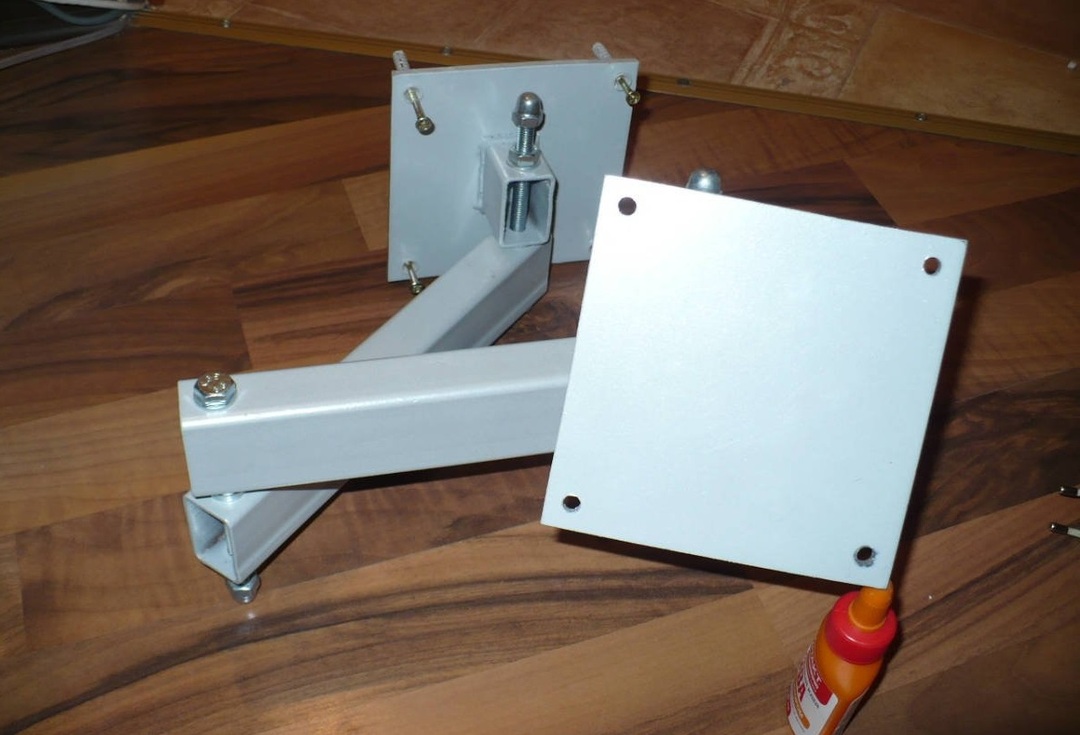
It would be more rational to use a square profile of 2x2 cm, since it is much easier to fix and set it in the desired plane
The wall-mounted plate is equipped with corners that need to be fixed parallel to the floor. So, you can turn the TV left and right.
The corners on the back of the TV are set perpendicular to the floor. This allows you to adjust the tilt of the screen to suit your needs.
In order for the TV to serve you as long as possible, we recommend purchasing an uninterruptible power supply for it. Read about how to choose the right device in this material.
Conclusions and useful video on the topic
You can learn how to make a swing-out bracket yourself from the following video:
A step-by-step process for making a do-it-yourself swing arm is presented in this video:
The article presents the basic requirements for installing a TV mount, tips for choosing a suitable place and several options for the construction of brackets of different designs.
Based on step-by-step instructions for making a fixed and swing-out structure, you can make your own bracket depending on your needs. So, you do not have to spend money on buying a factory product.
If you have already tried making a bracket for your TV yourself, then please share your experience with our readers. Perhaps you know the little-known secrets of making a reliable structure. If you wish, you can leave your comment in a special field immediately after the article.
